Grinding
Grinding Solutions: Your Ultimate Guide to Precision, Efficiency, and Performance
Grinding is a critical process in metalworking and industrial applications, forming the backbone of precision and efficiency in countless projects. From refining edges to preparing surfaces for the next stage, the right approach to grinding can elevate your work to unmatched levels of quality and performance.
At Weiler Abrasives, we know that success lies in the details. That’s why we’re dedicated to providing the tools, expertise, and innovative solutions you need to tackle demanding grinding applications with confidence. Our mission is to help you optimize your processes, reduce downtime, and achieve outstanding results every time.
In this guide, you’ll uncover everything from practical tips and expert insights to advanced techniques that will transform your grinding operations. Discover how Weiler Abrasives can partner with you to deliver precision, enhance efficiency, and redefine what’s possible in your projects.
The Basics of Abrasive Grinding
Grinding is the process of using abrasive tools to remove material from a workpiece, creating a smooth surface or achieving precise dimensions. Grinding wheels are among the most widely used tools in this process, prized for their versatility in shaping metal parts, preparing surfaces for finishing, and maintaining equipment components with precision. This process not only ensures product quality but also contributes to the efficiency and reliability of manufacturing and maintenance operations.
What is Grinding Used For?
Grinding is a versatile process employed for:
- Material Removal: Essential for eliminating excess material to prepare components for further processing or to achieve desired shapes, including heavy stock removal in industrial settings.
- Surface Preparation: Used to create smooth, uniform surfaces that are ideal for coatings, finishes, or welding. Applications range from cleaning large surfaces to refining edges.
- Precision Shaping and Finishing: Vital for achieving exact dimensions and high-quality finishes, especially for intricate or high-tolerance components like aerospace parts or precision molds.
Choosing the Right Finishing Discs
Understanding the requirements of your specific application is key to selecting finishing discs. Factors such as desired surface quality, material type, and tool compatibility with your processes all play a critical role in achieving optimal results. We’ll explore some key considerations and best practices for choosing the correct discs for your finishing operation.
Key Considerations
1. Desired Finish QualityThe desired surface finish—whether polished, blended, or a mirror finish—determines the tools and abrasives required. For instance:
- Rough Grinding: A 36- or 40-grit flap disc is ideal for material removal and weld leveling.
- Smooth Finishes: Progressively finer grits, such as 60, 80, or 120, are essential for achieving a smooth finish.
- Mirror Polish: For a reflective, polished surface, high-grit abrasives combined with buffing compounds or fiber wheels are needed.
Different materials, such as stainless steel or carbon steel, require specific abrasives for efficiency and avoiding damage.
- For stainless steel, products designed for this material can enhance cutting speed, durability, and heat resistance.
- For surfaces with heavy mill scale, coarser grit abrasives will remove it faster but may require additional steps to smooth the surface.
3. Tool Compatibility
Consider whether the discs will be used in manual or automated systems. The compatibility of abrasives with the tool type ensures consistent performance and safety.
4. Avoiding Cross-Contamination
Cross-contamination can compromise the quality and durability of stainless steel finishes. Use Inox-labeled abrasives to guarantee they are contaminant-free (less than 0.1% iron, sulfur, or chlorine). Additionally, never use a disc on stainless steel if it has previously been used on carbon steel. Color-coded wire brushes can help operators avoid this mistake.
Types of Grinding Processes:
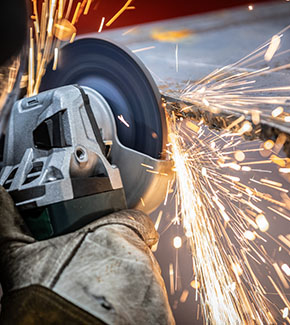
Rough Grinding
Rough Grinding
Rapid material removal for initial shaping.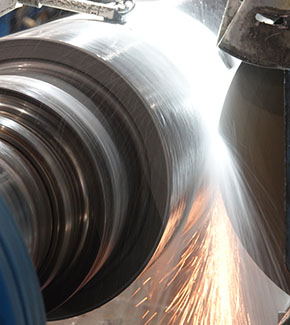
Precision Grinding
Precision Grinding
Achieving tight tolerances and fine finishes.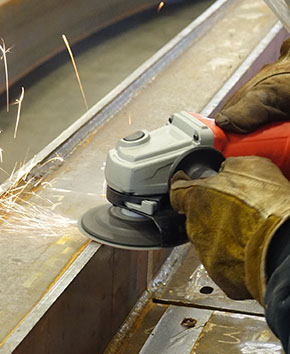
Surface Grinding
Surface Grinding
Flattening surfaces to ensure evenness and smoothness.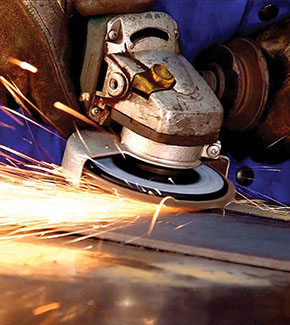
Weld Removal and Blending
Weld Removal and Blending
Eliminating welds for seamless transitions.
Rough Grinding
Rough Grinding
Rapid material removal for initial shaping.
Precision Grinding
Precision Grinding
Achieving tight tolerances and fine finishes.
Surface Grinding
Surface Grinding
Flattening surfaces to ensure evenness and smoothness.
Weld Removal and Blending
Weld Removal and Blending
Eliminating welds for seamless transitions.Materials Suited for Grinding
- Common Metals: Steel, stainless steel, and aluminum are frequently ground for applications such as weld blendingremoval, surface preparation, and shaping. Each metal requires specific abrasives and techniques to optimize performance and reduce wear.
- Exotic Alloys: High-performance materials like Inconel, titanium, and other superalloys are often used in demanding industries such as aerospace and power generation. Grinding these materials demands abrasives with exceptional durability and heat resistance to prevent material distortion.
- Cast Iron: Commonly found in automotive and industrial machinery, cast iron benefits from grinding for smoothing rough edges, removing casting imperfections, and ensuring dimensional accuracy.
- Composites and Non-Metals: Materials such as carbon fiber, fiberglass, and plastics also require grinding for applications like trimming, surface finishing, and edge preparation. Special abrasives are used to minimize damage and maintain the integrity of the material.
- Soft Metals: Copper, brass, aluminum, and other non-ferrous metals need grinding to remove tarnish or surface irregularities. Non-loading abrasives are critical to avoid clogging during these operations.
The Impact of Grinding on Operational Efficiency
Grinding plays a crucial role in ensuring operational success across industries, impacting multiple aspects of the process and results such as:
- Downtime: Excessive tool wear often results in frequent tool changes and unplanned stoppages. By using durable grinding tools designed for longevity, businesses can reduce downtime and maintain continuous operations.
- Material Integrity: Heat generation during grinding can lead to material distortion and reduced functionality. UsingImplementing advanced cooling techniques and heat-resistant abrasives ensures that materials retain their structural integrity and quality.
- Productivity Loss: Operator fatigue and safety risks, caused by inefficient tools, slow down workflows. Ergonomic tool designs and proper operator training not only enhance safety but also boost productivity by reducing physical strain.
- Quality Variability: Inconsistent grinding results can jeopardize product reliability and performance. Standardized processes and high-performance tools enable consistent outcomes, ensuring quality across all projects.
Understanding and addressing these issues is essential for achieving consistent and efficient results. By focusing on proper tool selection, maintenance, and usage techniques, industries can significantly enhance the effectiveness of their grinding operations.
Selecting the Right Grinding Tools
Key Considerations
- Material Type: Abrasive tools are designed for specific materials. For example, aluminum oxide is often the ideal choice for steel, while zirconia alumina or ceramic alumina is typically best suited for stainless steel and hard-to-grind metals.. Matching the abrasive to the material results in efficient cutting and extended tool life.
- Application: The task at hand significantly impacts tool selection. For weld removal, you may need an aggressive grinding wheel, whereas surface preparation might require finer abrasives for smoother finishes.
- Speed and Efficiency Requirements: The operational speed of the grinding machine and the desired rate of material removal should guide your choice. High-performance tools can save time while maintaining quality.
- Durability: Tools with longer lifespans reduce the frequency of replacements, minimizing downtime and improving cost-effectiveness.
Tool Geometry and Size: Verify the tool’s size and shape align with the application. Larger wheels or discs are suitable for extensive material removal, while smaller tools excel in precision tasks. - Heat Management: Tools designed with advanced bonding technologies, like V59 Bond, help reduce heat generation during grinding, preserving material integrity and tool life.
Selecting the most effective grinding tools enhances productivity, maintains safety, and achieves superior results in operations.
Overview of Grinding Tools
Grinding Wheels
Grinding wheels are a staple in grinding operations due to their durability and versatility. These tools are specifically designed for heavy-duty material removal and precise shaping of metal components. They are available in a variety of sizes, grains, and bonding agents, allowing operators to match the wheel to their specific needs. Proper selection and maintenance of grinding wheels ensure consistent performance and extended tool life, making them indispensable in industrial processes.
Resin Fiber Discs
Resin fiber discs are ideal for applications that require a fast cut rate and a smooth finish. Constructed with abrasive grains bonded to a fiber backing, these discs are excellent for metalworking tasks like weld blending, edge chamfering, and surface preparation. Operators appreciate their ability to deliver a uniform finish across various metals, including aluminum and stainless steel. Choosing the right grit size is essential for optimizing their performance and achieving desired results.
Grinding Best Practices for Maximum Efficiency
Safety Tips
- Always wear safety goggles or a face shield to protect against flying debris.
- Use earplugs or earmuffs in noisy environments to safeguard your hearing.
- In dusty conditions, wear a suitable mask or respirator to prevent inhalation of harmful particles.
- Gloves can provide a better grip and protect your hands from abrasions
- Check the grinder and accessories for any damage or wear.
- Ensure that the grinding wheel is properly mounted and secure.
- Verify that safety guards are in place and functioning correctly.
Maintain a Safe Work Environment:
- Keep the work area clean and free of clutter to prevent tripping hazards.
- Ensure adequate lighting to clearly see the workpiece and tools.
- Be aware of your surroundings, including the presence of flammable materials.
Follow Proper Operating Procedures:
- Use the grinder at the manufacturer's recommended speed.
- Apply the correct amount of pressure; excessive force can cause uneven wear or the wheel to fail.
- Always grind on the wheel's designated surface; improper use can lead to accidents.
Stay Alert and Focused:
- Avoid distractions while operating the grinder.
- Do not use the equipment if you are tired or under the influence of substances that impair your abilities.
Techniques for Efficiency
- Tool Selection: Consider the type of material being worked on and the specific task—whether it’s weld blending, stock removal, or surface preparation. Matching the tool’s abrasive type, size, and shape to the application ensures optimal performance and reduces wear. For instance, choosing high-performance abrasives can enhance removal rates and tool longevity, especially in demanding industrial applications.
- Optimize Tool Usage: Using tools correctly extends their lifespan and maintains efficiency. Avoid applying excessive pressure, as this can lead to premature wear, overheating, and a reduction in material removal rates. Instead, allow the tool’s abrasive properties to do the work, maintaining a steady, consistent motion for uniform results. Additionally, utilizing the proper angle of attack is critical for efficiency and minimizing disc wear.
- Reduce Downtime: Efficient workflow planning minimizes interruptions caused by tool changes or maintenance. Organize work processes to group similar tasks together, reducing the frequency of switching tools. Regularly inspect tools for wear to preemptively replace them before they fail, keeping operations running smoothly. Incorporating quick-change attachment systems can also reduce downtime during tool transitions.
- Regular Tool Maintenance: Keep tools clean and sharp to maintain their efficiency. Periodic inspection and proper dressing of grinding wheels prevent clogging, glazing, and uneven wear, ensuring consistent performance. Store abrasives in a clean, dry environment to avoid moisture-related issues that can compromise effectiveness.
- Optimal Machine Settings: Adjust machine speed, feed rate, and pressure settings to align with the tool and material being worked on. Proper calibration reduces strain on tools and machines while improving the quality of the output. For example, using slower speeds for softer materials and higher speeds for harder materials can maximize efficiency and precision.
- Training and Skill Development: Equip operators with the knowledge to use tools effectively. Training on best practices for grinding, including the importance of tool selection, angle control, and pressure application, can improve safety, reduce waste, and maximize tool performance. Experienced operators are better equipped to detect inefficiencies and make real-time adjustments to maintain productivity.
- Advanced Abrasive Technologies: Leverage advancements in abrasive technology, such as ceramic-infused abrasives or engineered blends, to improve grinding performance. These innovations provide faster cut rates, cooler grinding temperatures, and longer tool life, making them a worthwhile investment for demanding tasks.
Industries and Applications for Grinding
Grinding is a versatile process that finds applications across a wide range of industries. Below, we explore some of the key industries and the specific grinding applications that drive efficiency, precision, and productivity within each sector:
- Metal Fabrication and Pipeline: Grinding plays a pivotal role in metal fabrication and pipeline projects, ensuring smooth surfaces and precise edges. Common applications include weld grinding to remove excess weld material and prepare for the next weld pass pipe beveling to prepare pipeline ends for welding, and surface preparation to clean and smooth surfaces before coating or painting.
- Automotive and Aerospace: Both the automotive and aerospace industries demand high levels of precision and consistency, making grinding an essential process. In these sectors, grinding is used for shaping and finishing components, while body panel smoothing removes imperfections from car bodies to achieve a flawless finish.
- MRO (Maintenance, Repair, and Operations): Maintenance, repair, and operations rely on grinding to restore and maintain equipment functionality. This includes tool sharpening to extend the lifespan of cutting tools and machinery, surface restoration to remove rust, corrosion, and wear from components, and repairs to reshape damaged parts to their original specifications.
- Construction: Grinding enhances structural integrity and visual appeal in the construction industry. It is commonly used for, steel preparation to smooth and clean structural steel components.
- Energy and Power Generation: Energy and power generation facilities use grinding to optimize the performance and longevity of critical components. Applications include turbine component grinding to ensure smooth and efficient operation of steam and gas turbines, pipe and valve maintenance to prepare components for reliable operation under high pressure and temperature, and surface preparation to clean and prepare metal surfaces for coatings in harsh environments.
- Shipbuilding and Marine: Grinding is crucial in shipbuilding and marine industries to ensure durability and resistance to harsh conditions. It is employed for hull surface preparation to remove rust and old paint before recoating, propeller grinding to get optimal performance and efficiency, and back gouging and weld seam smoothing to achieve strong and smooth weld joints for structural integrity.
- Railway Maintenance: Grinding is an integral part of maintaining railway infrastructure for safety and performance. Applications in this sector include rail grinding to restore the shape and surface of rails, reducing wear and noise, wheel truing to obtain roundness and balance for train wheels, and component refurbishment to repair and restore railway parts and extend their service life.
- Food and Pharmaceutical: In the food and pharmaceutical industries, grinding supports hygiene and precision. It is used for surface finishing to gain smooth surfaces for sanitary equipment, precision grinding to shape components for medical and food processing equipment, and deburring to remove sharp edges from equipment parts to maintain safety and cleanliness.
Why Weiler for Grinding Solutions?
Innovation Driving Performance
Weiler's commitment to innovation extends beyond product development to include comprehensive process solutions. The Weiler Process Solutions (WPS) programs exemplifies this approach, combining technical expertise with practical application knowledge to help customers optimize their grinding operations. Through these programs, customers gain access to structured programs designed to identify and implement improvements that drive down costs while improving quality.
Quality That Delivers Results
Product quality at Weiler starts with advanced manufacturing capabilities and extends through rigorous testing and quality control procedures. Grinding product undergoes extensive testing to confirm it meets or exceeds industry standards for performance and safety. This commitment to quality helps customers maintain consistent production quality while maximizing operational efficiency.
Technical Support: Expertise When You Need It
Weiler's technical support extends beyond product recommendations to include comprehensive application support. On-site process optimization helps customers maximize the value of their grinding operations. Training programs ensure operators understand both proper techniques and safety requirements. Documentation assistance helps maintain consistent performance across shifts and operations.
- New innovations help you meet environmental standards and sustainability expectations
- World-class research, development, and manufacturing capabilities keep your business ahead of the competition
- Proprietary technologies and global access to abrasive cutting wheels provide flexibility and freedom to develop limitless solutions
- Stable supply and local inventory to keep your business running smoothly and reduce your inventory burden
- On-site technical support and education to keep your cutting process optimized and your people safe
- Engineered solutions tailored to your specific applications
Our Customers Experience Unparalleled Results
“I just don’t want to be a gear supplier. I want to be a partner. And I think Weiler has done a good job of doing that with Rave.”
Duis aute irure dolor in reprehenderit in voluptate velit esse cillum dolore eu fugiat nulla pariatur. Reprehenderit in voluptate velit esse cillum dolore eu fugiat nulla pariatur.
Duis aute irure dolor in reprehenderit in voluptate velit esse cillum dolore eu fugiat nulla pariatur. Reprehenderit in voluptate velit esse cillum dolore eu fugiat nulla pariatur.
Related Resources
Weiler Abrasives offers a wealth of resources to support your cutting operations.
See how a change to a Weiler single profile grinding gear led to a nearly 50% reduction in grinding time.
Weiler experts helped a gear manufacturer eliminate their bottleneck in the grinding process for 44% fewer passes per part.
Grinding Resources and Tools
Weiler Abrasives offers a wealth of resources to support your grinding operations.
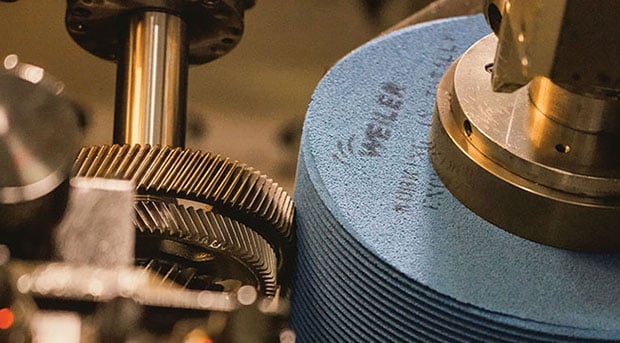
Product Guide
Explore how Weiler Abrasives delivers precision and performance in gear grinding with our detailed product brochure.
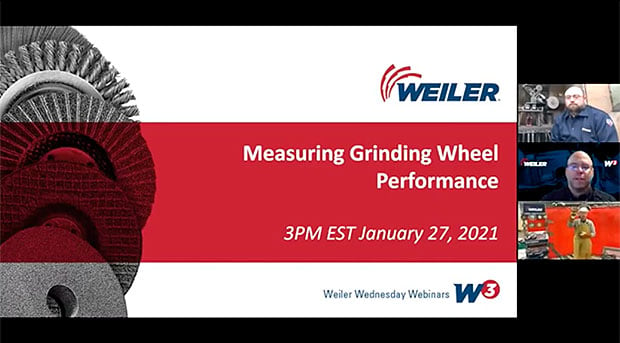
Webinar
Join us to explore best practices for accurately measuring grinding wheel efficiency and effectiveness.
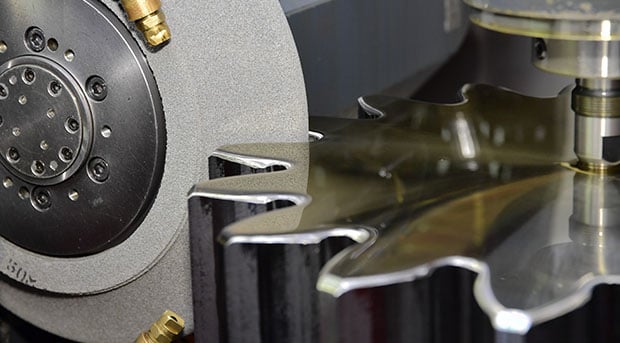
Best Practices
Learn four tips to optimize quality and reduce cycle time in gear tooth profile grinding from our Technical Sales Manager.
Let’s Transform Your Grinding Operations
Grinding is a critical step that directly impacts your productivity, efficiency, and bottom line. That’s why we’re dedicated to providing innovative solutions that help you achieve exceptional results every time.
From high-performance grinding wheels to expert guidance and training, our comprehensive range of solutions is designed to meet the unique challenges of your grinding applications. Whether you’re tackling heavy material removal or precision finishing, our products and expertise are here to support you.
Ready to elevate your grinding operations? Connect with us today to explore how Weiler Abrasives can help.